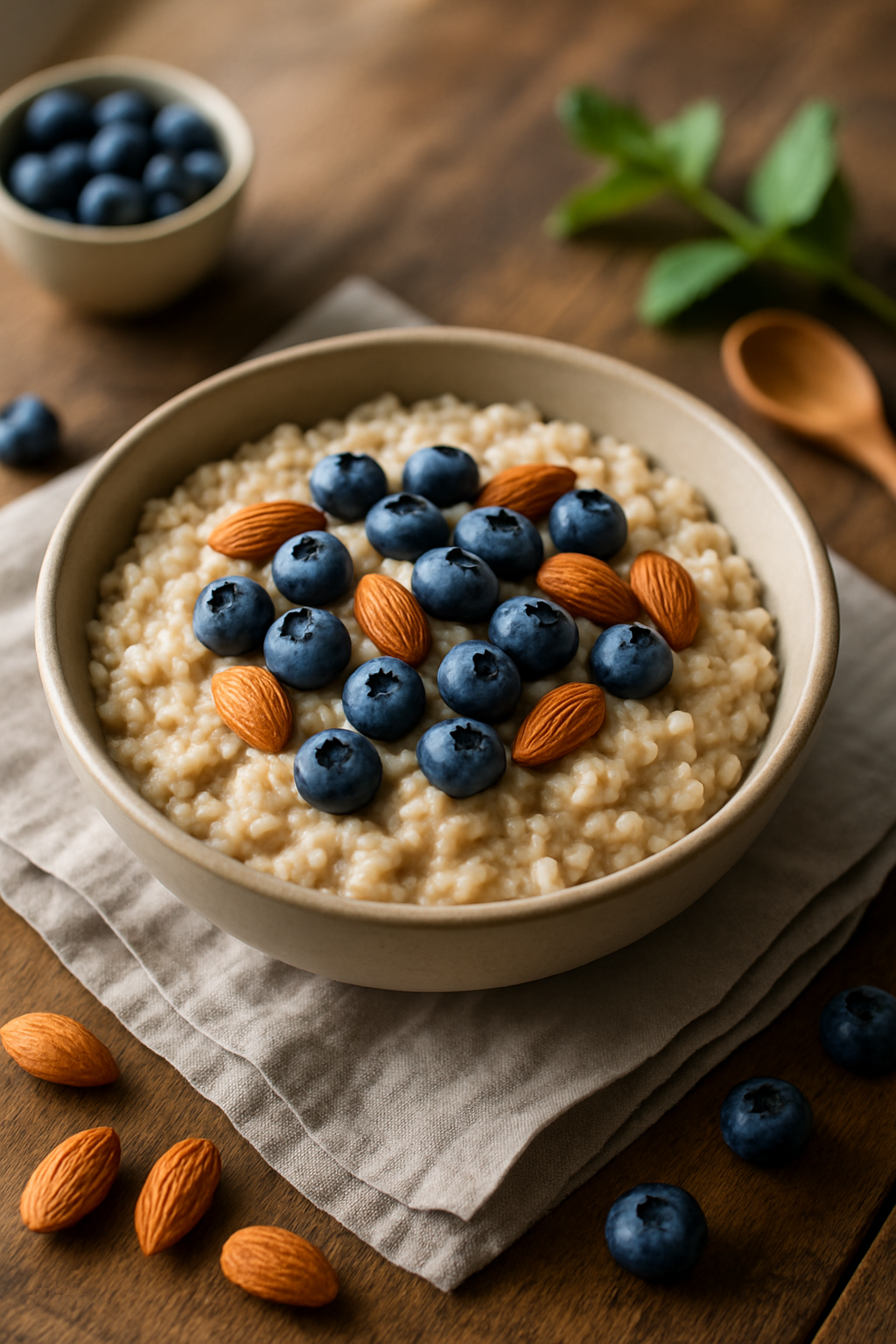Low GI Diet: How Low Glycemic Index Foods Help Control Blood Sugar and Improve Health

Meta Description :
Discover the benefits of a low GI diet for controlling blood sugar, supporting weight management, and improving long-term heart health.
Introduction
The glycemic index (GI) ranks foods based on how quickly they raise blood sugar levels. Low GI foods digest more slowly, helping maintain steady energy and preventing glucose spikes. According to the American Diabetes Association (2023), a low GI diet is an effective strategy for improving blood sugar control and reducing diabetes risk.
What Is the Glycemic Index?
- High GI foods (70 or above): White bread, sugary drinks, processed snacks
- Medium GI foods (56–69): Brown rice, sweet potatoes
- Low GI foods (55 or below): Oats, legumes, apples
📊 A 2022 systematic review in the journal Nutrients (DOI:10.3390/nu14071326) found that low GI diets significantly lowered fasting blood glucose and HbA1c in patients with type 2 diabetes.
Health Benefits of a Low GI Diet
1. Better Blood Sugar Control
Low GI foods slow glucose absorption, reducing blood sugar spikes after meals.
👉 According to Harvard Medical School (2023), replacing high GI foods with low GI alternatives lowered post-meal glucose by 20–30%.
2. Weight Management
Foods with a lower GI are more filling, reducing overeating.
📊 A 2021 NIH trial with 900 adults found that participants on a low GI diet lost 2.1 kg more weight over 12 weeks compared to a high GI group.
3. Heart Health
Low GI diets reduce cholesterol and triglyceride levels.
👉 The Lancet (2020, DOI:10.1016/S2213-8587(20)30076-2) concluded that low GI eating patterns decreased cardiovascular risk factors by 15%.
Best Low GI Foods to Include
- Whole grains: oats, quinoa, barley
- Legumes: lentils, chickpeas, black beans
- Fruits: apples, pears, berries
- Non-starchy vegetables: broccoli, spinach, carrots
- Nuts and seeds: almonds, chia seeds, flaxseeds
Practical Tips for a Low GI Diet
- Replace white bread with whole grain or sourdough.
- Swap sugary drinks for water or unsweetened tea.
- Pair carbs with protein and healthy fats to lower overall GI.
- Plan meals with mixed macronutrients for balanced digestion.
FAQ
Q1: Is a low GI diet only for diabetics?
➡️ No. It benefits anyone seeking stable energy, weight control, or heart health.
Q2: Can fruit be part of a low GI diet?
➡️ Yes. Most fruits like apples, berries, and pears are naturally low GI.
Q3: How quickly can I see results?
➡️ Many people experience steadier energy and reduced cravings within 2–4 weeks.
Conclusion
A low GI diet helps regulate blood sugar, supports weight management, and improves heart health. By choosing more whole grains, legumes, fruits, and vegetables, you can enjoy lasting benefits with simple, sustainable changes.



